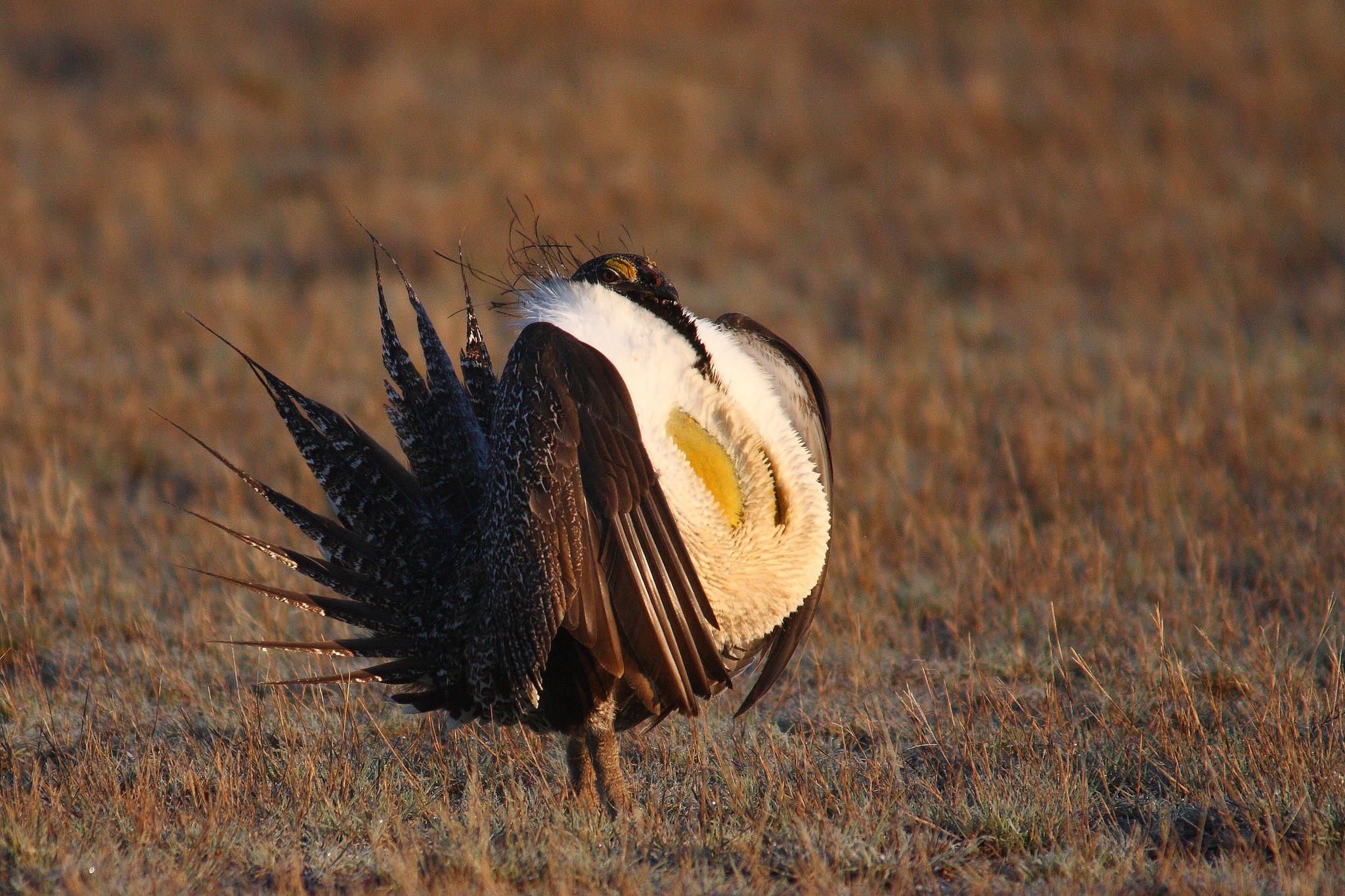Conventional wisdom holds that state and federal environmental regulation is better than either alone. But even with the best of intentions, federal, one-size-fits-all regulation that interferes with more-effective state and private wildlife conservation efforts can cause real harm. That’s true for the greater sage grouse, a chicken-size bird that is found on 172 million acres in eleven western states. Federal sage-grouse plans issued in 2015 both hurt the sage grouse and threaten thousands of productive jobs tied to almost 73 million acres of federal land in the West. Killing those federal rules will help the grouse.
For an on-the-ground view of these issues, consider the case of Jack Farris, a third-generation rancher in Garfield County, Colo., who grazes cattle on federal land and on private land he owns and leases. The Farris family has a long tradition of environmental stewardship, including controlling noxious weeds and hauling water to remote troughs to lure cattle away from environmentally sensitive streams.
Now, however, as part of the federal sage-grouse plan for Colorado, Jack Farris would have to reduce the number of cattle he can graze by 50 percent, which he can’t afford. “If they cut my cattle by 50 percent, I might be out of business,” Jack told us. Garfield County officials, in objecting to the federal sage-grouse plan for Colorado, observed what could happen if the plan forced ranchers like Jack Farris off the land:
The unintended consequences of this action include driving more ranchers out of business, which results in subdivision of ranchland, which increases fire danger, noxious weeds, predators, non-native vegetation, and other factors that could result in harm to existing sage grouse populations.
Private landowners are key to sage-grouse conservation because they own almost all of the wetland habitat the species depends on, and they are by far the largest number of grouse conservationists. If the goal is sage-grouse conservation, alienating ranchers and driving them off the land is the worst thing to do. “How do you conserve grouse that split their time between private and public lands?” Patrick Donnelly, a U.S. Fish and Wildlife Service biologist, asked in a federal Sage Grouse Initiative publication. “With 81% of sparse summer habitat in private ownership, sage grouse success is inextricably linked to ranching and farming in the West.”
The federal sage-grouse plans threaten numerous jobs other than ranching and unintentionally harm the sage grouse in the process. Fortunately, there are several potential fixes. The Interior Department is currently considering some administrative changes allowed by the existing rules. But very little can be done administratively without a four- to six-year process to modify the existing rules, which will probably be second-guessed by federal judges. Legislation is another option, but threatened filibusters in the Senate stopped previous legislative fixes.
There is, however, a simple way forward. The most promising option for sage-grouse conservation is to use the Congressional Review Act (CRA) to sweep away the destructive federal plans, allowing state plans and private conservation efforts to work as intended and permitting federal regulators to consider substantially different management plans that work in tandem, instead of at cross-purposes, with state plans and private efforts.
The federal sage-grouse plans, which were implemented with four main “Records of Decision” (RODs), went through most of the legally required steps before publication, but they were never formally submitted to Congress for its review under the CRA. Congressional awareness of rules does not trigger CRA review. For very good reasons, including the certainty needed to suspend important congressional procedures, the CRA provides that the congressional review period begins on the second of two events: publication, if required by other law, and formal submission to Congress by the relevant agencies of a report with the rule and certain other information.
There is no doubt that the four RODs (two by the Bureau of Land Management and two by the Forest Service) are the type of rules that must be formally submitted to Congress for its review. There also is no doubt that the two agencies failed to do so — at least not yet. Congress was wrongly denied an opportunity to use the CRA’s expedited procedures to review the sage-grouse RODs in 2015, but the agencies’ failure can be corrected. Indeed, the agencies remain under a continuing duty to submit the RODs to Congress if they are to be enforced, because the RODs are not lawfully in effect until then. In short, we believe the RODs must be submitted for review whether or not the agencies want Congress to disapprove of them.
When the RODs are sent to both houses of Congress and to the Government Accountability Office, as the CRA requires, each house will then have 60 legislative or session days to use the CRA’s expedited procedures to introduce and vote on resolutions of disapproval. Members of Congress in the Great Basin states may be particularly interested in seeking disapproval of the two RODs that cover their region. If so, the maximum time for debate is limited in the Senate, with a simple majority vote in both chambers sending the resolutions to the president for his signature.
If the president signs the resolutions of disapproval, the CRA provides that the rules will be treated as if they never existed — reviving the previous federal management plans. The Bureau of Land Management and Forest Service would be forbidden to reissue substantially similar sage-grouse plans for whatever regional plans were disapproved, but there are many better — though different — management plans the government could issue that would work well with the state and private conservation efforts for the sage grouse.
One concern with eliminating the current sage-grouse plans is that doing so could trigger a reversal of the of the U.S. Fish & Wildlife Service’s decision in 2015 not to list the bird under the Endangered Species Act. That is not a realistic concern for several reasons, especially compared with the harm the federal rules are starting to have on the sage grouse.
Moreover, the sage grouse is so numerous that it is currently hunted in most of the states in its range and has a minimum total estimated population of at least 425,000, which is based on the latest range-wide estimate, published at the same time as the federal sage-grouse plans in 2015. Finally, the federal government could encourage further conservation efforts on private land if the bird population started to decline — but the state plans, free from interference from D.C., would probably improve the situation for the sage grouse enough to make this unnecessary.
The greater sage grouse is doing well, thanks primarily to state and private conservation efforts. It is time to do more for the environment by doing less: Remove the harmful federal plans and let states and landowners continue to conserve the sage grouse.
This article originally appeared in the National Review on September 26, 2017.




